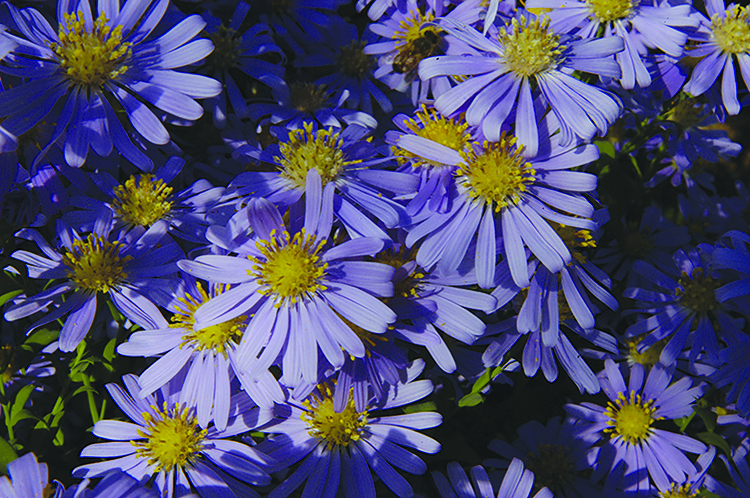
Ranked as the No. 1 aster in the Mt. Cuba Center’s evaluation study, Bluebird aster produces abundant, violet blue flowers on 3-4’ tall stems as fall color begins in the surrounding forest. (Photo courtesy Mt. Cuba Center)
Along with asters being an attractive flower, it also has an intriguing history.
Its name comes from the Greek word for star, referring to the shape of its flowers.
Their flower heads appear as a single flower but with a closer look, they are comprised of several florets.
The central disk florets are usually yellow, purple or rose colored and produce the pollen and nectar.
Ray florets surround the disks in an array of colors including white, pink, purple and blue.
According to Greek mythology, when the god Jupiter decided to flood the earth to destroy warring men, Astraea, the goddess of falling stars was so upset she asked to be turned into a star.
Her wish was granted, but when the flood waters receded she wept for the loss of lives.
Her tears turned to stardust as they fell to earth and from that, asters grew.
Early Greeks also believed that the perfume from the burning leaves of these flowers could drive away evil serpents.
Yet another myth suggests magical fairies sleep under the petals of an aster flower at sunset.
In France, the aster was known as the Eye of Christ and their flowers were laid on the graves of dead soldiers to symbolize the yearning for an end to battle.
In the relatively young United States, there aren’t centuries of lore around the flower, but the aster is the birth flower for the month of September and the flower for the 20th wedding anniversary.
There are approximately 250 types of asters growing around the world and some 150 aster species in North America.
Native throughout Eastern and central North America, it is not common in the wild, a point that undoubtedly contributes to its lack of recognition.
The plants are low growing, reaching 1-3 inches in height and are strongly branched, creating a very dense plant.
“Fragrant aster is a wonderful plant to mass in the garden as a groundcover, to plant amongst ornamental grasses or use as pops of mid to late autumn color in the garden, says Bruce Crawford, manager of horticulture at Rutgers Gardens. “During the years I have worked with the plant, it has not required division or care other than removing the previous year’s stems each spring.
“In spite of these great, garden worthy attributes, it is not a plant I see gracing many landscapes.”
Although many asters prefer dry-to-medium moisture conditions in full sun, there are options for dry, shady spots, or for wet areas of the landscape as well, says Susan Martin, a Master Gardener in the Charlottesville, Va., area.
“There are also plenty of choices in height, habit, and color,” she adds. “Rust and powdery mildew can mar an aster’s beauty, so be sure to look for asters that are more resistant to these diseases. Add this low-maintenance native plant to your garden, and fall will be even more beautiful.”
With so much history, aster has come to symbolize many things to convey feelings and messages including wisdom, faith and valor.
Today, Asters also are known as a symbol of love, elegance and patience.
Their star-like blooms also represent a combination of good fortune and gained wisdom.
And with so much versatility — there’s nearly an aster for any growing situation — you don’t need a lot of plant wisdom to have good fortune with them in your landscape.




